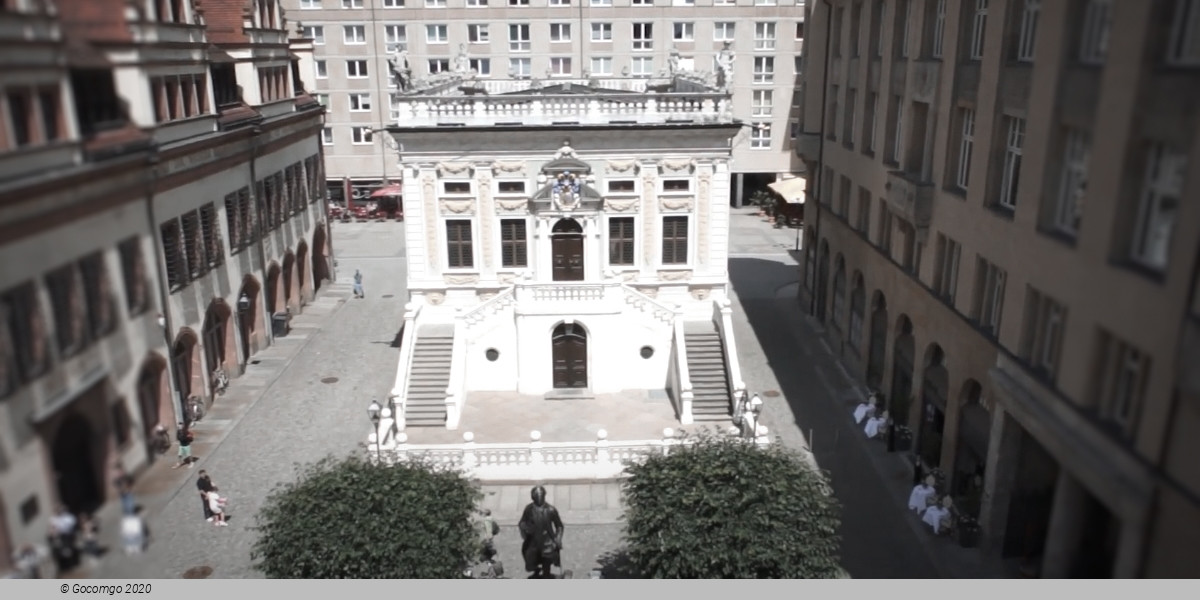Alte Börse (Leipzig, Germany)
Alte Börse

Old trading exchange oldest Assembly building of the department team and one of the oldest Baroque buildings of the city.
Creation
On 6 May 1678, the building decision was made by 30 large merchants, who had become a Tradition of meeting and sealing large businesses in a neutral room. In the same month, on May, 30th construction on the Naschmarkt was started.
The design of the Old Stock Exchange has in many Details parallels to the Palais im Großen Garten and the Lusthaus im Italien Garten in Dresden. The design of the building is probably the result of Johann Georg Starcke, the mayor of the Oberlandbau office at the court of Johann Georg II in Dresden. It appears that no designs have been commissioned to design the interior. In addition to the Leipzig councillor Christian Richter, the stone masons Andreas Junghans from Rochlitz, Hans Caspar Beck from Laucha and Melchior Bock from Zeitz, as well as the master carpenter Christian Schmied were involved in the construction of the building. As early as 1679, the building completed in the Shell was used for the first time. However, the old trading exchange was completed only in 1687, after the stucco ceiling and the seven allegorical ceiling paintings by Johann Heinrich at the end
The addition " old " trading exchange became necessary only from 1886, when the Tröndlinring was inaugurated.
Architecture
Goethe Statue in front of the Old stock exchange
Above the two-armed stairway, two winged putts hold the magnificent Leipzig city coat of arms. While the second floor was used as a stock exchange Hall, the ground floor was rented to merchants. The facades of the freestanding building are uniformly provided on all sides with high-rectangular and above it low-rectangular cross-rectangular windows. The Old trading stock exchange thus combines elements of the Dutch and Italian Baroque, which makes it a very special piece of jewelry, the Leipzig architecture.
Use, Destruction, Reconstruction
The vaults located on the ground floor were rented to merchants. The hall, which was built for Stock Exchange meetings on the upper floor, served as a Redouten hall outside the trade fairs and was used to hold auctions.
After the end of the war of liberation and the reopening of the stock exchange in 1816, a reconstruction and expansion of the building was carried out according to designs by the Leipzig building director Johann Carl Friedrich Dauthe and the Karlsruhe building director Friedrich Weinbrenner. With the growth of trade fair activity in the second half of the 19th century, the construction of the new stock exchange was decided.
After 1887, the stock exchange Hall served as a meeting place for the city's deputies. Between 1905 and 1907, the front was erected in 1816 and the original form of the building was restored with a forecourt.
The old trading market on the Naschmarkt (around 1880)
In the Second World War, the old trading exchange completely burned out, which led to the irretrievable loss of valuable stucco ceiling and ceiling paintings. The building, which was destroyed in 1943, was secured by an emergency roof. From 1955 work began to restore. These were completed in 1962. In the result, the building received its present colour scheme. The former stock exchange hall is used for cultural events such as readings, concerts and exhibitions.


